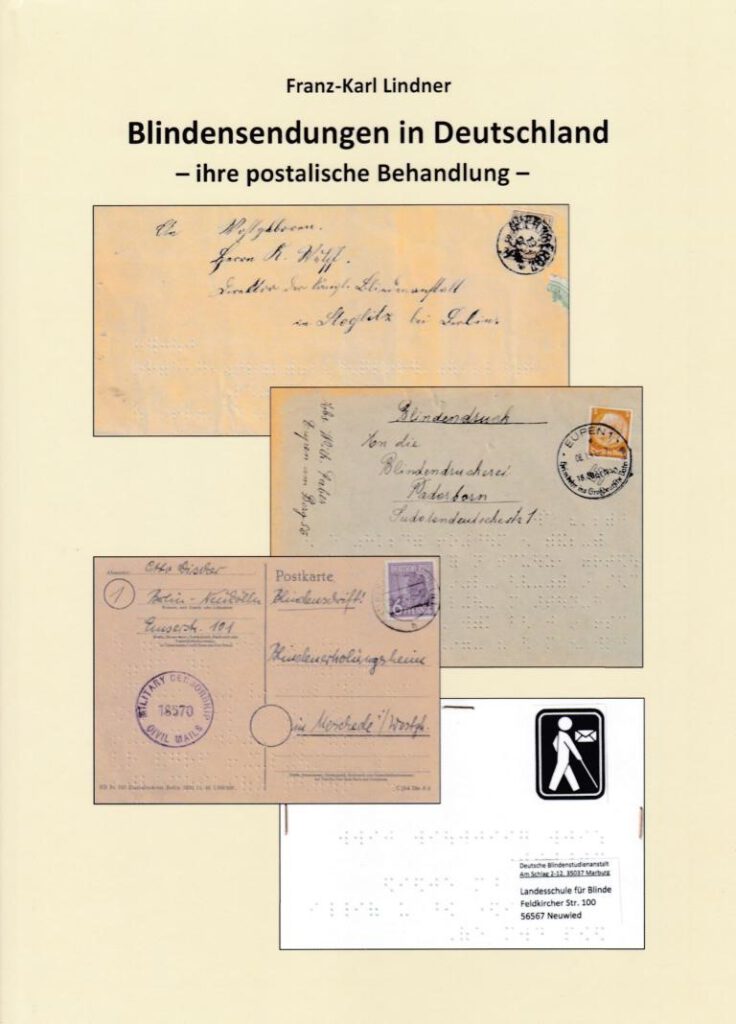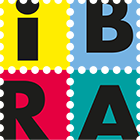IBRA News 07.05.2023 – NEWLY PUBLISHED FOR IBRA 2023: Franz-Karl Lindner: Blindensendungen in Deutschland – ihre postalische Behandlung
(Rainer von Scharpen/pcp)Somebody knows what he is talking about. Lindner worked as a teacher for the blind for over forty years, including more than twenty years as head of the von Vincke School for the Blind and Visually Impaired in Soest. Thus, his book is about more than just writing a “philatelic-scientific” work. His aim is to address as wide an audience as possible in a comprehensible language and with a catchy presentation and to familiarise them with the blind and their care, without neglecting the philatelic aspect or foregoing accuracy in the information. And the advanced collector should also get his money’s worth. To say it in advance: the author has succeeded in this balancing act!
The general introduction informs about the basic communication possibilities of blind people and sheds light on the position and importance of blind people in antiquity through the Middle Ages to the establishment of the first schools for the blind in the late 18th century. The path from the first tactile relief writings to the invention of Braille in 1825 was a long one. At the age of three, Louis Braille went blind as a result of an injury he sustained while playing with an awl in his father’s shoemaker’s workshop. It was not until he was sixteen that he developed his own Braille. He was inspired by a “night writing” system introduced by the military, which enabled soldiers to feel texts in the dark. Braille skilfully reduced this system to a six-dot code, with the help of which 63 combinations for all letters, numbers and punctuation marks could be represented. However, it took another 25 years for Braille to achieve a breakthrough, which he did shortly before his death when his script was officially approved for teaching in schools for the blind. Today, it is the common system in all countries of the world and is used for a wide variety of languages and scripts, including Arabic, Japanese and, most recently, Tibetan. Sabriye Tenberken developed this version for her students. After studying in Marburg and Bonn, she and her husband founded the first school for the blind in Lhasa in 1998.
The introductory cultural-historical outline leads to a detailed description of the postal treatment of cecograms [< Latin caecus = blind], the international term for items sent to the blind in the postal language. When the UPU was founded, the fee was still the same as for ordinary letters. In 1886, items sent to the blind were treated as printed matter, which for the first time amounted to a reduction in the fee. At the UPU Congress in Madrid in 1920, it was decided to introduce a special charge for items sent for the blind, with a maximum weight that gradually rose to 7 kg. The 1952 Congress in Brussels recommended that items for the blind be sent postage-free, which some countries did.


